| 1 | San Lucan rattlesnake |
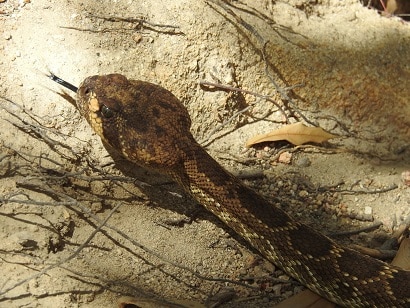
One of the main rattlesnakes in Mexico’s Baja California peninsula. This is a less red subspecies of the red diamond rattlesnake found in US California. San Lucan rattlers have a haemotoxic venom which weakens blood vessel linings and slows blood clotting, triggering spontaneous bleeding. They vary by region: in some neighbourhoods they’re stronger than cottonmouths, while others are milder, more survivable.
San Lucan rattlesnakes are most commonly encountered on rural roads, including dirt roads that farmers drive down, or rifle-wielding hunters, or trespassers up to no good. The San Lucan rattlesnake has a strong chance of blocking their way, grinding their car to a complete halt. While their venom is relatively mild, most Baja California locals don’t know that. If any snake in this corner of Mexico could block a village roads for hours, it’s the San Lucan rattlesnake.
As a steady, slow-moving species, they can settle in to bask for a long time. It’s possible to shoo them away if you have nerves of steel, though San Lucan rattlesnakes often exceed 100cm. This species has roughly equal venom potency to the Baja California rattlesnake (Crotalus enyo) they coexist with. This rattler is also common on roads, and regularly ends up as roadkill.
| 2 | Lined snake |
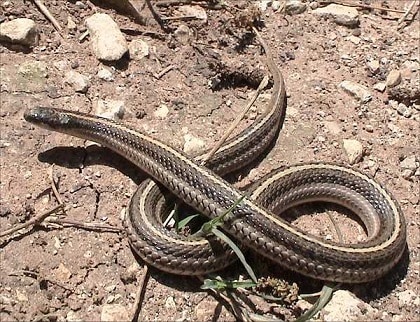
A harmless species of Kansas, Nebraska and Illinois, which is exceptionally difficult to find. This is a weird garter snake offshoot which lives in sweeping prairies with knee length grass. This already makes them impossible to spot, and then they add beige colours, and then they add burrowing tendencies, as earthworms are their favourite prey.
Lined snakes (Tropidoclonion lineatum) are incredibly successful in their goal of staying hidden. But there’s one hope – roads. Lined snakes sometimes stray to the edges of roads in their territories, particularly after heavy rains. This is widely acknowledged as the only reliable way to find them, and any wise reptile enthusiast will drive slowly along these grassland roads in his car.
They’re still challenging to find, as their wispy beige colours remain. Lined snakes are a slow species which don’t draw attention to themselves. They won’t zip in front of your car, but are more likely to be resting calmly, maybe by an old rickety fence separating off a grassy hill. Finding a lined snake is an accomplishment for an avid reptile enthusiast. All you need are a photograph, a car, and patience.
| 3 | Angolan coral snake |
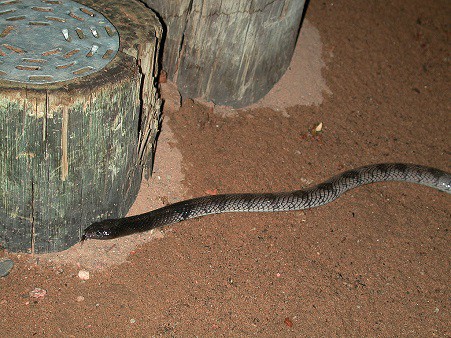
A snake of dry savannahs and scrublands of southern Namibia. To find the Angolan coral snake, you have to scramble through loose rocks on hands and foot, wishing you’d brought a water bottle, as the merciless sun beats down on your back. But they commonly cross roads within these wildlands, and that’s the best place to find them.
This is a neurotoxic species which is more aggressive than US coral snakes, and much less colourful. They rear up, hiss, and spread a cobra-like hood, and have variable colours, sometimes stone grey, but often with beige chest bands. This is a fairly slow-moving snake, so if they’re crossing a road, you’re in luck, but if they’re a few metres away, they won’t suddenly appear.
To find an Angolan coral snake, you must drive slowly up and down Namibia’s desert roads, peering out of your car window. You must be patient and keep driving for many hours, until you come cross a long black shape. Angolan coral snakes hide amidst rocks, but if you’re lucky you’ll find one in an adventurous mood, though their dark colours make spotting them at night almost impossible, even in the glare of your headlights.
| 4 | Bernier’s striped snake |
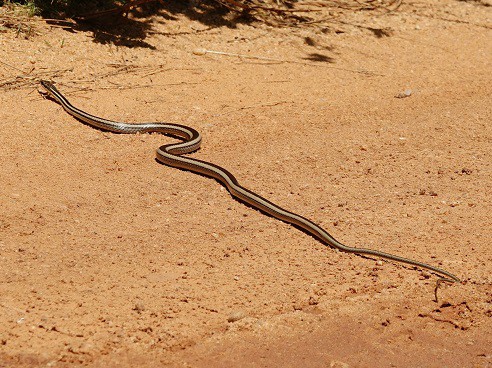
A 70-90cm species, which is the most likely snake to find on a rural road in Madagascar. While Dumeril’s boa is Madagascar’s lazy constrictor, this is their fast and adventurous species.
Bernier’s striped snakes (Dromicodryas bernieri) inhabit the whole of Madagascar, and are commonly found crossing roads at high speeds. They have flexible habitats, from forests to villages to fields, so roads are certainly no problem. Bernier’s striped snakes are more likely to cross a road than bask on it for hours. Western chocolate executives visiting cocoa plantations are likely to meet this snake and wonder what they’ve got themselves into.
Dromicodryas bernieri isn’t completely reckless, as they move through long dry grass and between dry bushes when possible. But a road isn’t going to stop them. For other snakes, a river of tarmac is a terrifying barrier, but Bernier’s striped snake just speeds ahead without a second thought. They won’t let the works of mankind block their path, if the woodland on the opposite side looks promising for prey. Bernier’s striped snakes mostly prey on lizards, with the occasional frog, and this species is a relentless pursuer of lady snakes.
| 5 | Coachwhip |
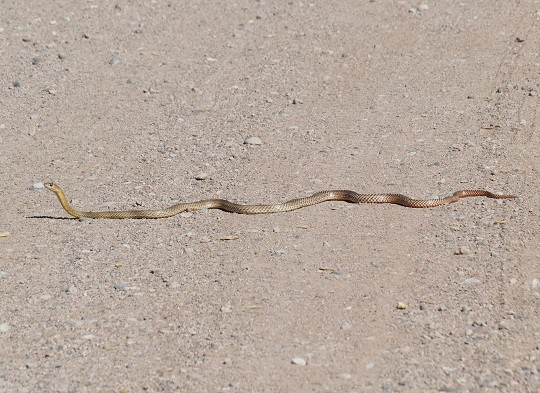
The coachwhip is an adventurous species of the southern US, which has high tolerance for heat. While other snakes cower in their burrows at mid-day, coachwhips will slither around freely despite the oppressive sun. This includes sizzling roads where the tarmac has absorbed every atom of ultraviolet radiation.
Coachwhips inhabit every state of the US south, from Florida to Texas to California. They like a variety of open habitats, from fields to semi-deserts to sparse woodlands. They hate forests, so unlike a copperhead, you’ll never find them on a highway bisecting a thickly forested national park. Instead, you’ll find coachwhips crossing roads in dusty plains with old porches and tumbleweed, with a lone gas station and the occasional police patroller with a bored expression. Roads in drier national parks may contain coachwhips as well.
Coachwhips are less likely to settle in and block a road for hours, but they’re so active and energetic that there’s a great chance of spotting one. Their speed makes them eye-catching, and their 2 metre length makes them a large target. Coachwhips are diurnal rather than nocturnal.
| 6 | Eastern tiger snake |
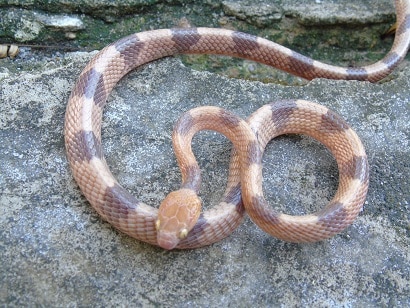
A South African snake measuring 75cm, which has an extremely mild venom. Eastern tiger snakes (Telescopus semiannulatus) prefer savannah with plenty of tree clumps, with peeling bark strips that they can hide in. They love to hide in safety, away from hyenas and stampeding herds of elephants, and who can blame them. But most of their diet is lizards, not worms or millipedes. They have to get adventurous if they want to survive, and this commonly brings them to roads near savannahs, or through them.
Driving down roads is the best way to spot this harmless species, and while small, they stand out well with their beige-orange scales, which resemble a children’s toy. Eastern tiger snakes inhabit eastern South Africa, and avoid parched, arid environments. Bulging eyes is a classic ID sign once you’re up close.
There’s always luck involved – some guy could find 7 eastern tiger snakes in an hour while you drive up and down and find none. But roads are the secret to finding this harmless African serpent, as well as searching beneath bark strips. The one caveat is that their venom has no research, although it’s assumed to be milder than mild. This is one of hundreds of African snakes with vast gaps in the research.
| 7 | Common green racer |
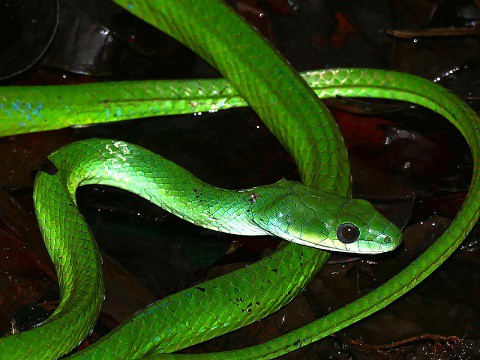
A confident snake of South American rainforests, which effortlessly slithers up branches and leaps towards unsuspecting bats. Common green racers (Philodryas viridissima) inhabit moist forests and the grasslands next door, and the roads near forests. They have a tendency to find a road, coil up, and relax on the smooth surface for an hour or two.
Common green racers are most common on roads at midday, and their venom is an enduring question. One male victim experienced nothing but pain, while a female was left with a deformed limb, which may have been from a misidentified green snake.
Philodryas viridissima can reach 140cm, and are thin-bodied. If you’re skilful, you can weave your car past this snake, or use a dirt ramp to jump them, but you’ll probably have to screech to a halt. Philodryas viridissima is fast and impatient, except when it’s their special basking time, so they can block roads for a while. This is an extremely common South American species: Brazil, Paraguay, Suriname, Venezuela, Bolivia, etc.
| 8 | Horseshoe whipsnake |
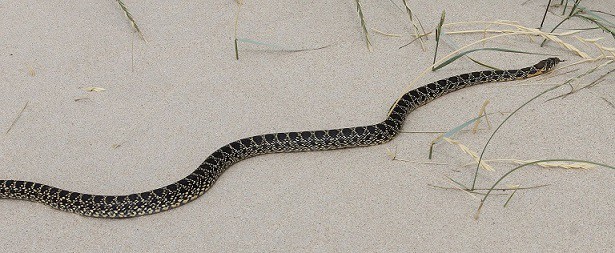
This species lives only in Portugal and Spain, but in those countries, it’s absolutely everywhere. Horseshoe whipsnakes only avoid dense forests and urban concrete jungles. While avoiding busy highways, they’re common on rural roads, where they pay little attention to cars honking their horns.
Horseshoe whipsnakes reach 1.5 metres and are fast-moving, with a varied diet. Roads are just another zone of their world, rather than a prime piece of land they’re especially attracted to, but as virtually all of southern and central Spain is their playground, it’s common to see horseshoe whipsnakes by the sides of roads or in the centre. A possible explanation is their scavenger nature. Horseshoe whipsnakes include rotting carcasses in their diet, which may include roadkill animals. Little do they realise that they could be next in line.
This species is recognisable by a series of round, tightly packed blotches, which are dark brown. It wouldn’t be surprising if horseshoe whipsnakes know these are roads and are using them as corridors on purpose. Rather than being backed into ever shrinking forests, horseshoe whipsnakes cope well with human development, and roads are no exception.
| 9 | Mozambique shovel snout |
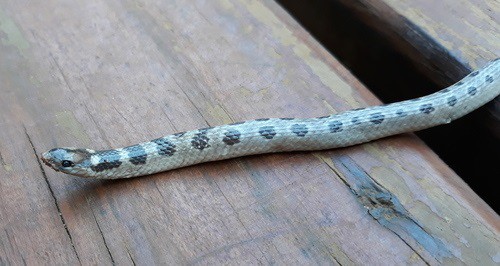
A harmless species with a modified snout designed for shoving aside soil and vanishing underground. Mozambique shovel snouts measure 50-80cm, and prefer woodlands and wet savannahs, always with soft soils that they can vanish into. Even when above ground, they hide under cover like leaves, hollow logs and bushes.
If you want to find one, you’ll have an epic challenge on your hands. But like the eastern tiger snake next door, heading to roads is a shortcut, albeit one that doesn’t guarantee success. Mozambique shovel snouts are regular visitors to roads, for whatever reason. They might be crossing to new hunting grounds, lured by female scents, or basking in the sun on cooler days. You can spot them from a safari vehicle, a motorbike, a golf buggy that you’ve stolen from the nearby club.
Mozambique shovel snouts have round beady eyes and a pale belly. The base colour varies from yellow to grey, but they have a consistent pattern of dozens of black circles, some fusing together. The circles and base colour contrast sharply, and the circles disappear towards the tail.
| 10 | Hispaniola boa |
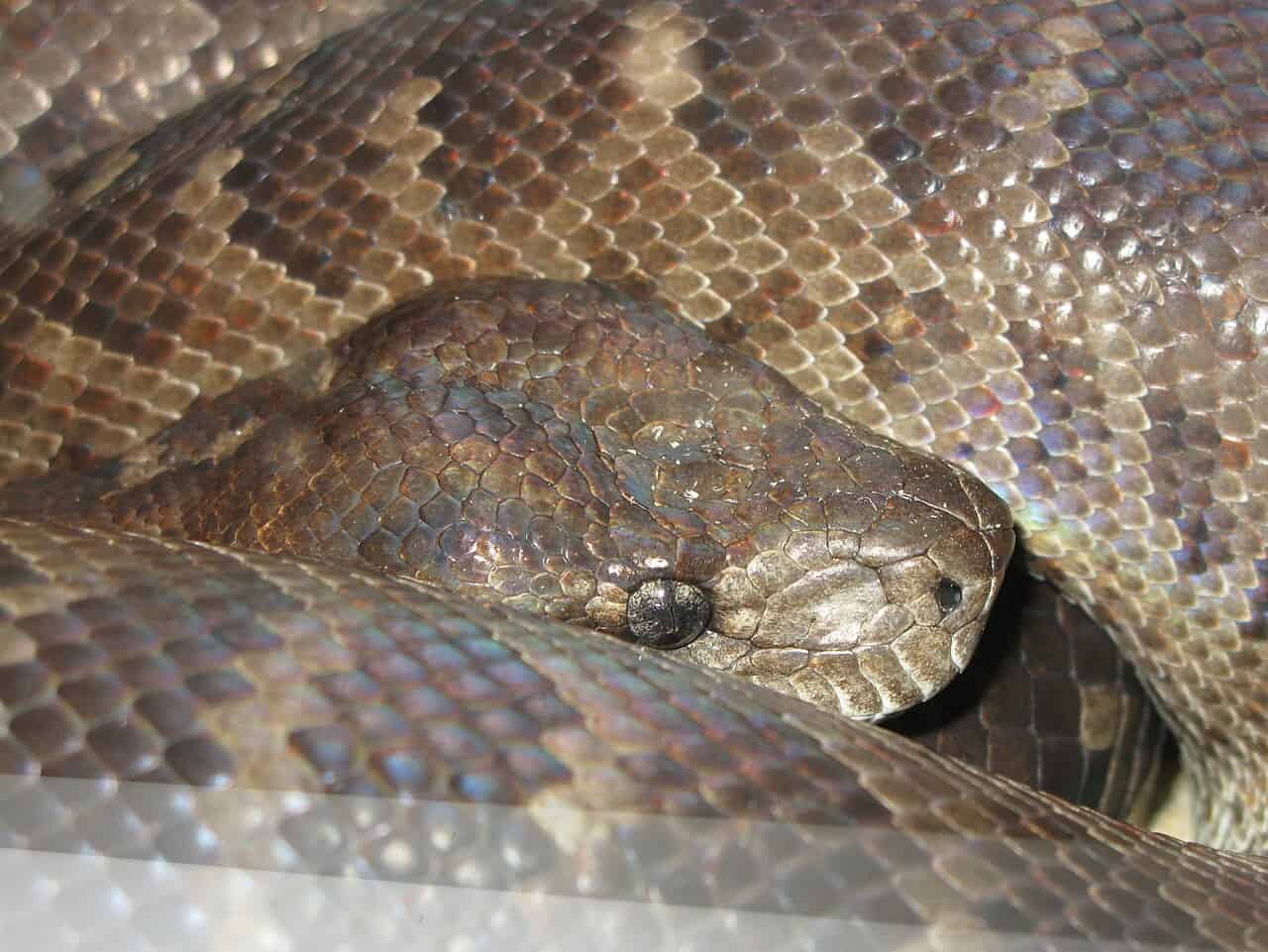
The largest boa on Hispaniola, the island split between Haiti in the west and Dominican Republic in the east. Officially, this is a forest snake, but it doesn’t obey the suffocating labels that herpetologists slap on it. Hispaniola boas go where they please, as long as a few tree clumps are standing, including rural roads which impatient drivers are hoping to navigate.
This is a calm, happy boa with no aggression towards people. They rarely fly into a panic and lunge with their fangs bared, and they’re rarely in a rush. But this also applies when draped over a road. Thy can bask in the sun for hours and ignore any requests to move. Honking a horn will likely prove useless, while picking them up is risk-free, but too much for some superstitious locals.
Hispaniola boas aren’t as giga as Cuban boas, but regularly exceed 2 metres. They’re more common in the Dominican Republic, but still plentiful in Haiti despite rampant deforestation. Most of their diet is black rats and house mice, so they’re especially common on roads next to plantations, with forests on the opposite side.
